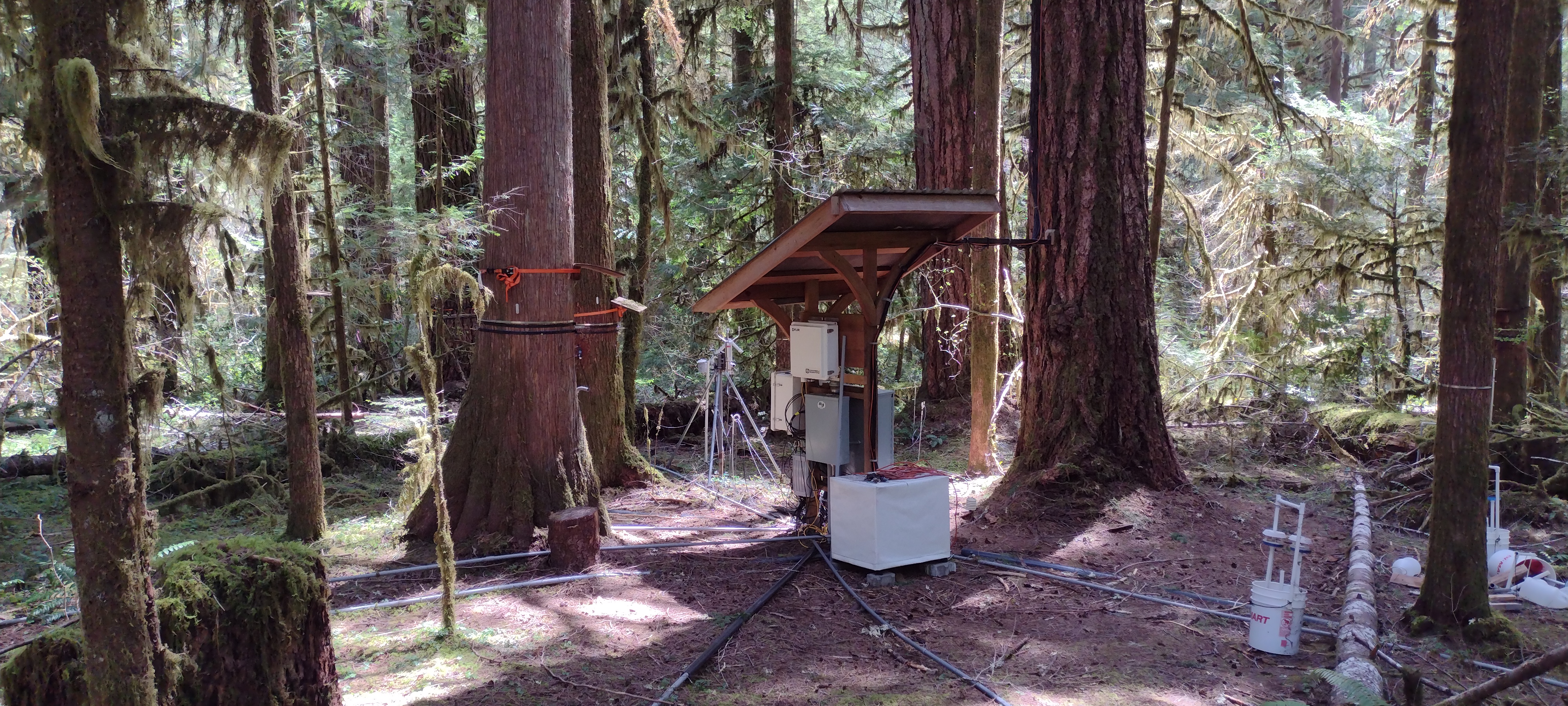How do you take the pulse of a tree? High-precision dendrometer bands like the ones pictured here can measure daily fluctuations in water balance of a tree bole, in addition to its seasonal growth. The summer drought experienced by trees at the Andrews Forest is one of many stressors that has been increasing over time with climate change. While the tree species that have thrived in this landscape for millennia are adapted to wet winters and dry summers, prolonged drought combined with heat waves can stress even the drought-tolerant Douglas fir trees and lead to early shut down of stem growth. An extreme example of this was the 2021 June heat wave that caused many trees subjected to record high temperatures to cease diameter growth abruptly and drop heat-damaged foliage. In the dry season we see tree stems contract during the late morning and afternoon as water is moved from the stem to foliage to meet the tree’s transpiration needs and then expand overnight as soil water replenishes stem water, at least partially (near real-time graphs of some of the dendrometers are posted here). Over the course of a strong dry season like we are experiencing in 2023 even the nighttime maximum circumference decreases from day to day, as growth ceases and stem water cannot be fully recharged. One downside to this type of dendrometer: cables everywhere. And cables and fire do not mix well. So far nine of our dendrometer plots have been visited by the Lookout Fire; we don’t expect the dendrometers and cables have made it, but we hold out hope for the trees.
First posted September 19, 2023

